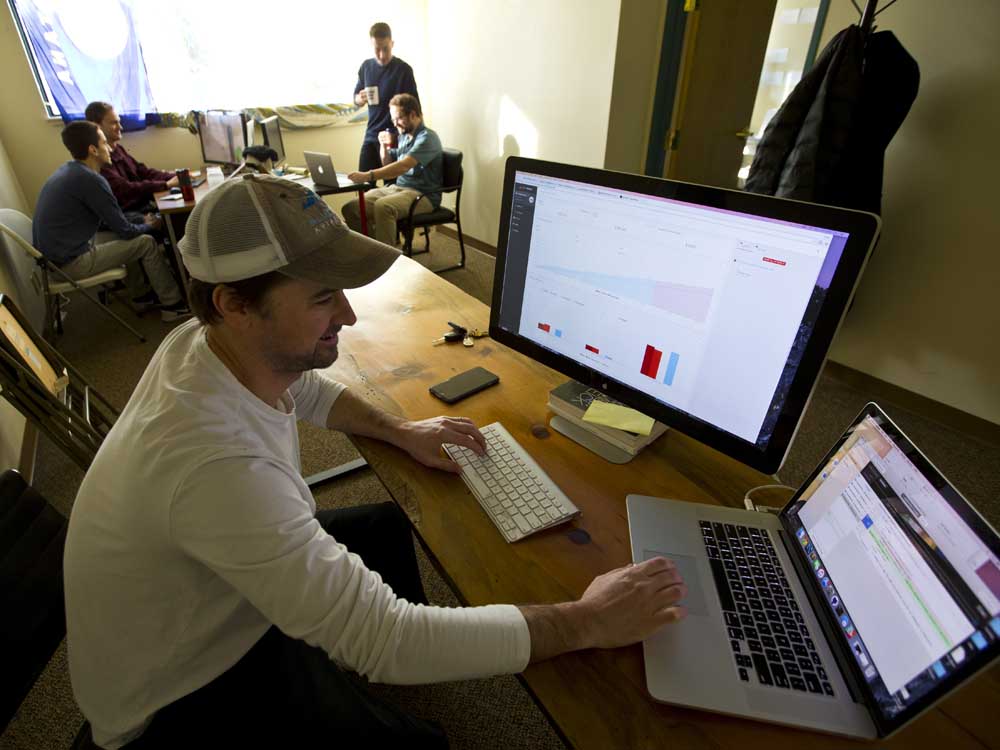Bend company helps monitor online marketing
Published 12:00 am Tuesday, February 23, 2016

- Andy Tullis / The BulletinJon Davis, center, CEO, works with SteadyBudget's application with other members of the company's six-person team.
For large digital marketing firms that juggle hundreds of advertising campaigns simultaneously, choosing where and how to allocate money can be a challenge.
That’s where SteadyBudget comes in.
“At the core, what we’re trying to do is solve problems for companies that have lots of clients,” said CEO Jon Davis.
Davis left the Bend-based digital marketing agency G5 in 2013 to branch off on his own. His first digital marketing venture failed, and the concept that eventually became SteadyBudget’s core application took a while to develop. Eventually, the company received an undisclosed investment from Oregon-based investors Drew Smith and Bruce Rhine in July 2015.
“It’s been really good to have those two guys here in terms of advising us,” Davis said.
It has allowed the application to evolve as well. While Davis said the program began as a simple budgeting tool, it has since evolved into a software application that provides key indicators like clicks or impressions to help advertising firms monitor their various clients and choose where to allocate money.
Essentially, digital marketing analysts receive money from clients to promote their companies through a variety of sites. Using SteadyBudget, those analysts can monitor whether their spending has been under or over budget for each individual campaign, and they can use more than 30 data points to see how the campaign is performing across some of the main online venues, like Google, Facebook and Bing.
“If an analyst makes an observation that you’re trending behind, they can click and see detailed data on the campaigns,” Davis said.
He added that one of the advantages to SteadyBudget is that it integrates with those major platforms, aggregating data from various sources automatically and allowing users to halt and change spending on those channels without even logging into Google or Facebook.
“You’re able to compare a Facebook ad to a Google ad, side to side, and make decisions about which ad copy might be working best,” Davis said.
SteadyBudget now has 15 companies using the program consistently, along with some freelance digital analysts and myriad companies participating in the 45-day free trial. Thanks to SteadyBudget’s ability to accommodate about a dozen world currencies, Davis said the company is working with users from Bend to China to New Zealand.
Going forward, he said the company hopes to continue adding around two or three clients per month, with an eye toward growing the user base to three times what it is now by the end of 2016.
“We’ve made a lot of progress in the last few months,” Davis said.
—Reporter: 541-617-7818, shamway@bendbulletin.com
Q: What can the product look like in two to three years?
A: We see our product really solving a lot of the day-to-day problems, making our data really available for analysts to use and mold the way that they want to use it within their organization.
Q: Any surprising trends that have showed up in your marketing data?
A: I think the cool part is noticing how there aren’t a lot of general trends, how each client is really unique and how the goals of each client really change on a case-by-case basis.






